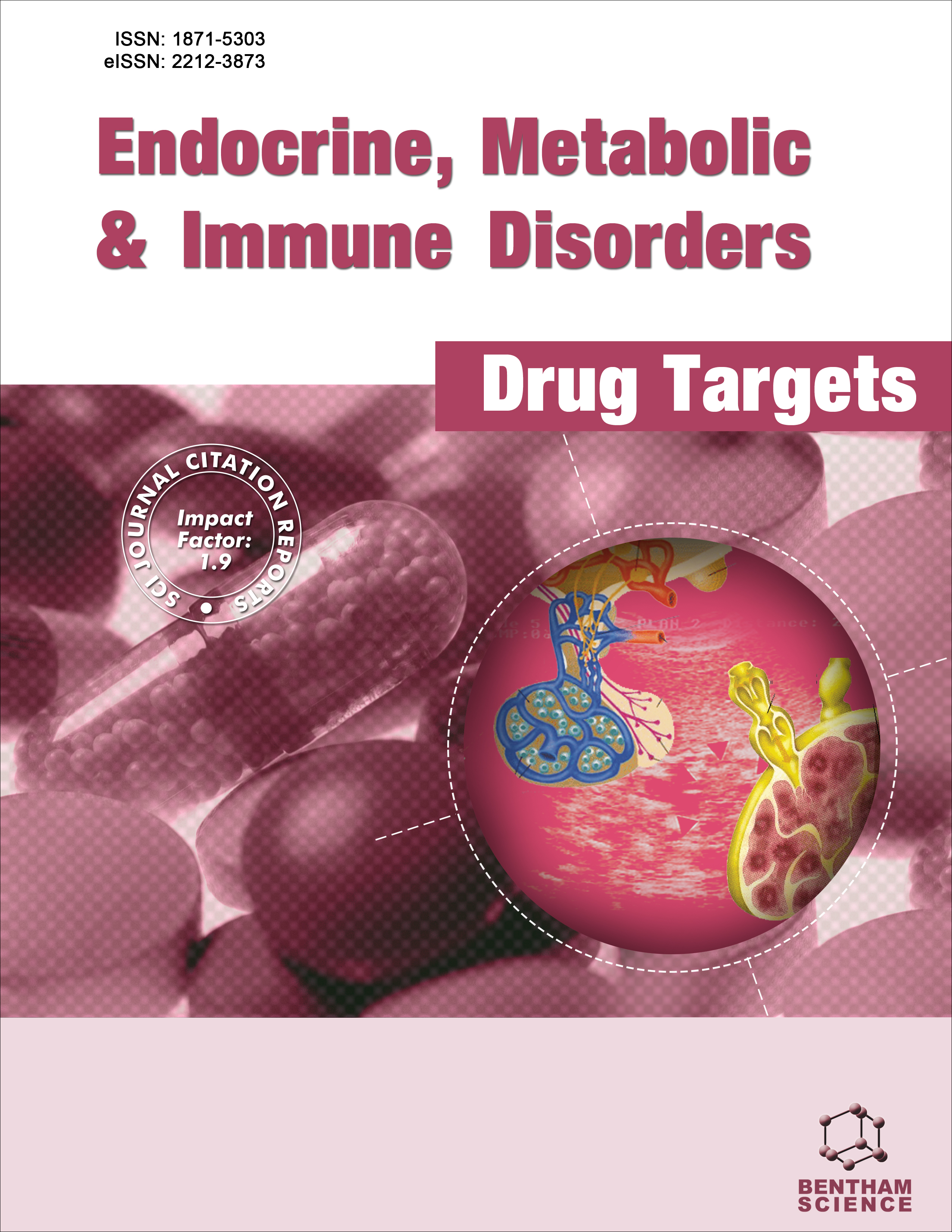-
oa Long-term Remission in Functioning Pituitary Adenomas after Medical Therapy Withdrawal: A Chance for Cushing’s Disease
- Source: Endocrine, Metabolic & Immune Disorders-Drug Targets, Volume 25, Issue 10, Aug 2025, p. 824 - 833
-
- 20 May 2024
- 26 Jun 2024
- 30 Jul 2024
Abstract
The possibility of sustained disease remission in functioning pituitary adenomas after drug withdrawal is well-known for prolactinomas and it has also been described in a subset of acromegalic patients. On the contrary, medical treatment for Cushing’s Disease (CD) is generally considered a life-long measure except for previously radio-treated patients. Sparse evidence of spontaneous remissions in CD has been reported, mainly related to a possible pituitary tumor apoplexy. To the best of our knowledge, none of these cases has included the use of a pituitary targeting agent.
Herein, we have reported the case of a radiotherapy-naïve patient with persistent CD after pituitary surgery who participated in the CSOMG230 trials, presenting sustained remission after Long-acting Release (LAR) pasireotide withdrawal. Under monthly pasireotide LAR 40 mg, the patient achieved urinary hormone control and clinical signs of cortisol excess normalization. After 8 years of treatment, the patient completed the study protocol and had to withdraw the drug as it was no longer available for CD in Italy. Before starting new therapies, we reassessed hormone levels that were surprisingly within normal ranges. At 24 months after the last dose of pasireotide, the patient was still in clinical and biochemical full remission. We have also briefly reviewed previous cases of sustained remission after somatostatin analogues withdrawal in other functioning pituitary adenomas.
Far from the general rule, this case suggests that prolonged treatment with pasireotide LAR might induce a durable CD remission. A dose down-titration/suspension might be considered in patients well-controlled on long-term therapy and with negative pituitary imaging. However, close monitoring is recommended given the high rate of complications in untreated patients.


